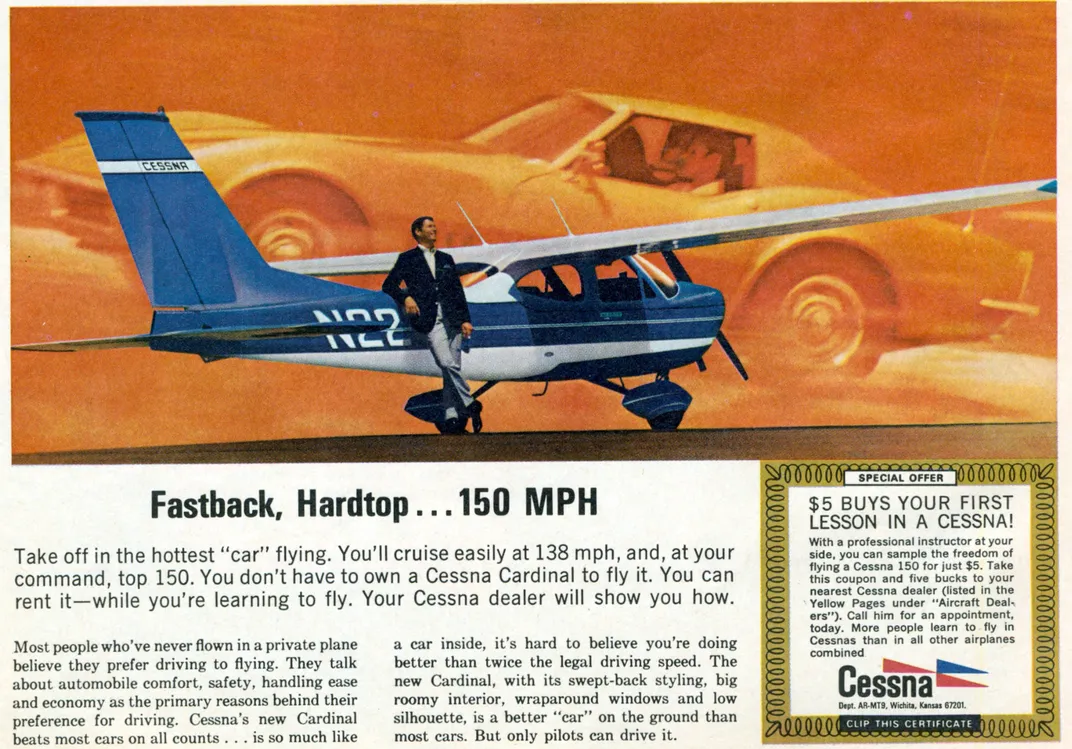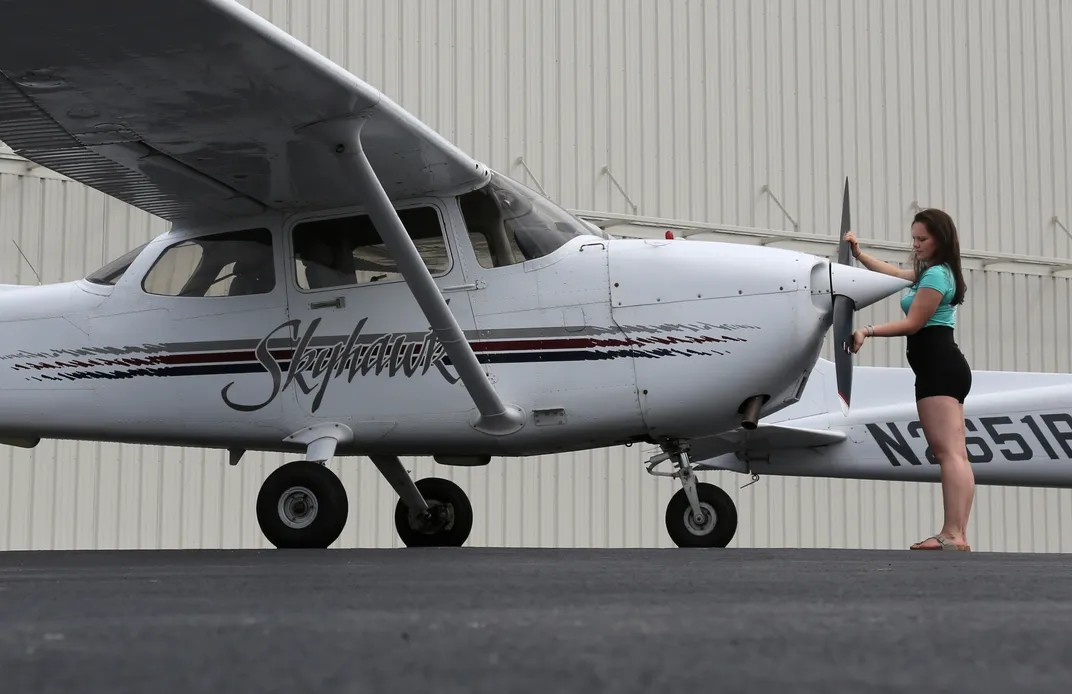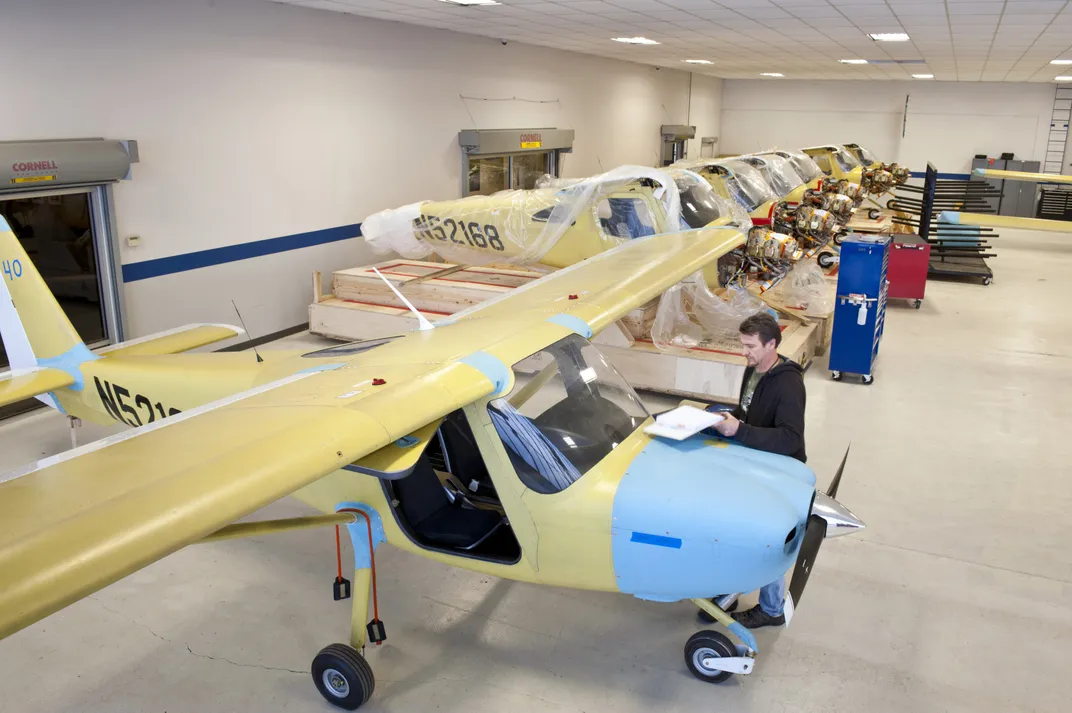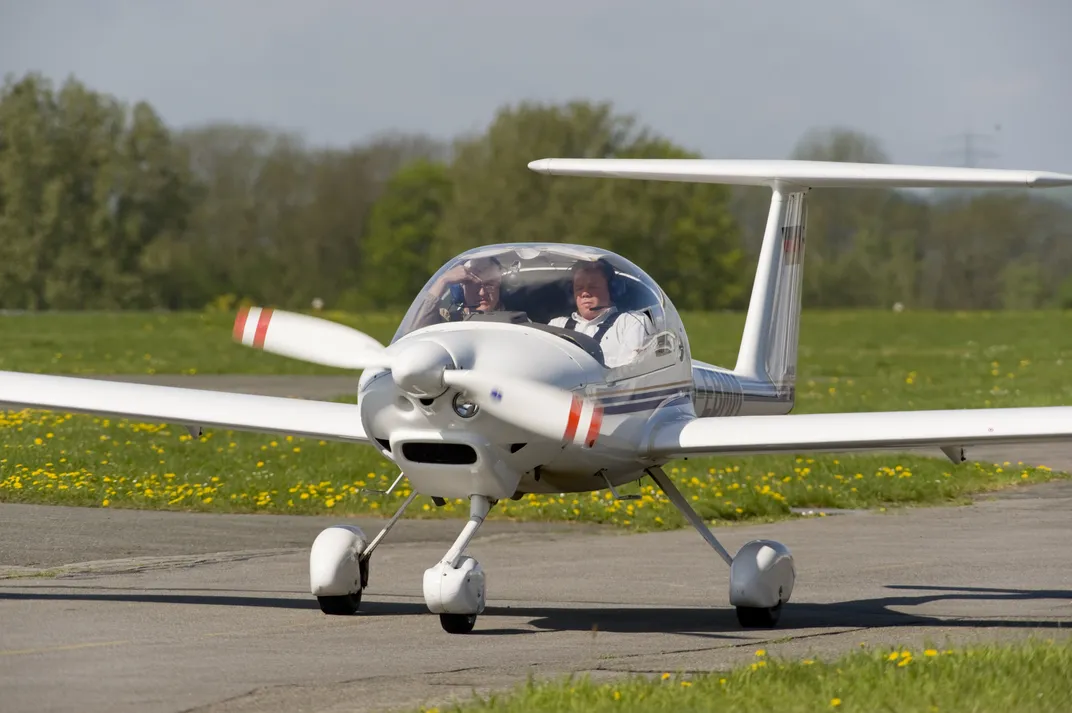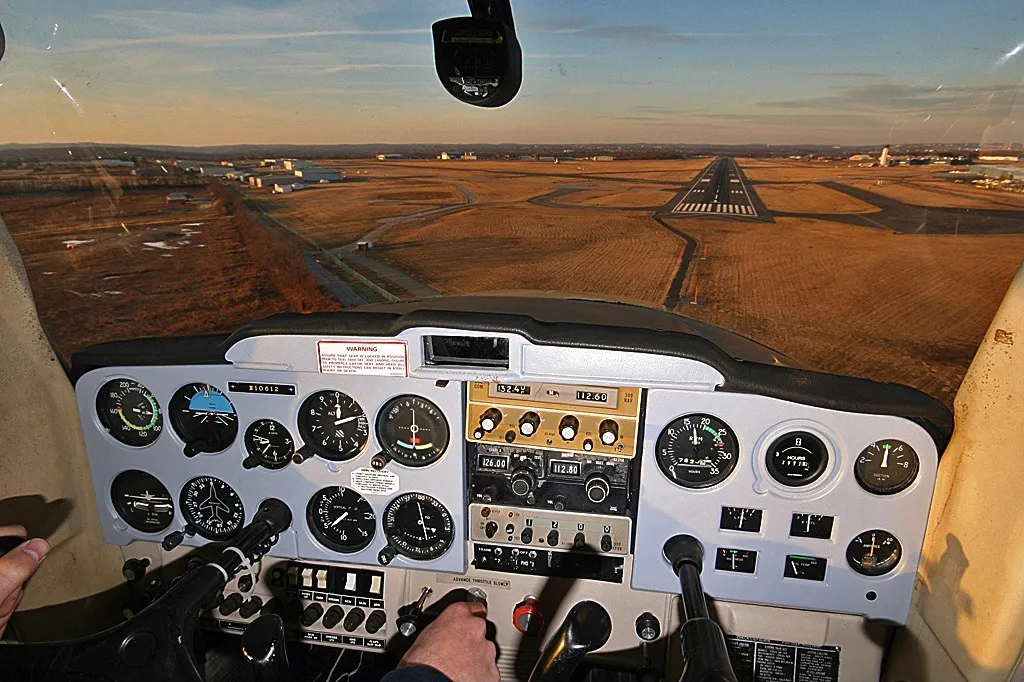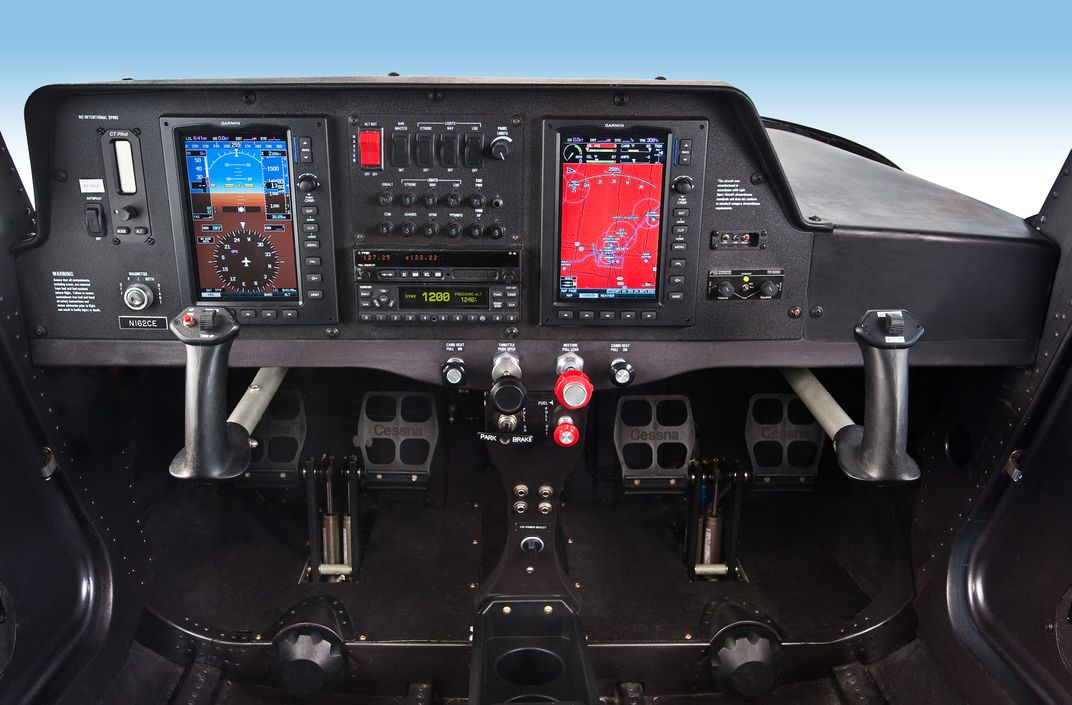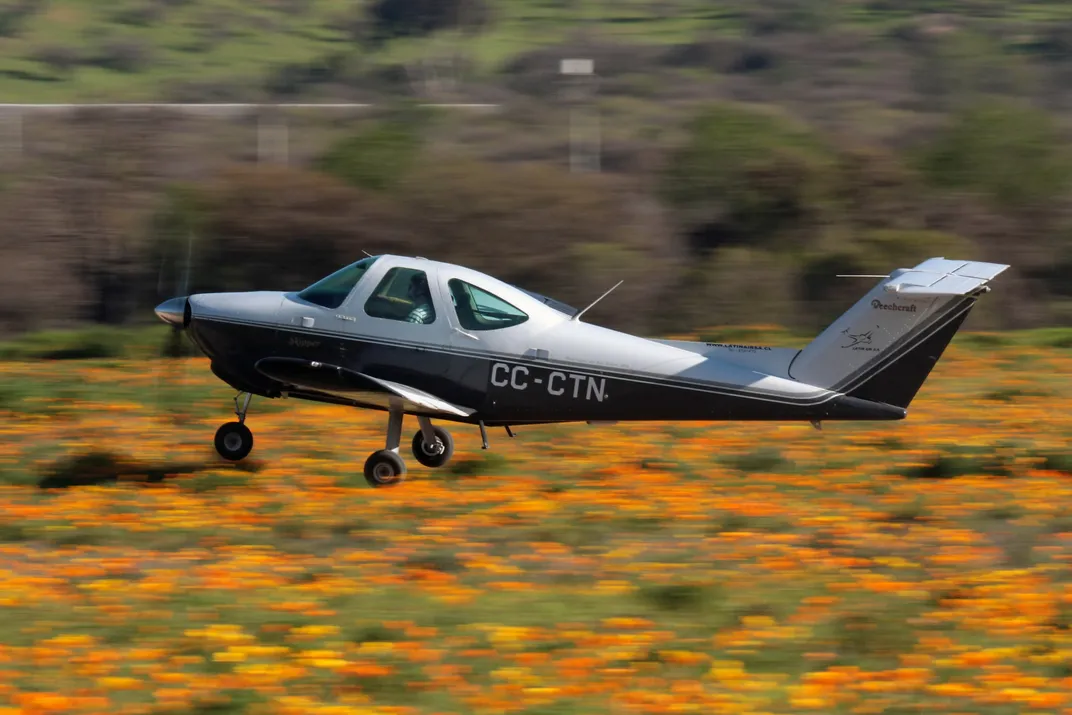How Important Is a Pilot’s First Airplane?
Why older trainers often have the edge on newer ones.
/https://tf-cmsv2-smithsonianmag-media.s3.amazonaws.com/filer/dc/4e/dc4e124b-4783-4b3e-b5fc-e58f83144cbd/06n_am14_cessna1521007446md_6452_live.jpg)
The first flight in my first logbook is dated December 5, 1970, and says I had .8 hour of dual instruction at the Teterboro School of Aeronautics in New Jersey with an instructor whose name I can’t remember and whose signature I can’t make out. Under remarks, he wrote “FAM FLT”—a familiarization flight, which we’d made in a Cessna 150. One thing I do remember vividly is a feeling of queasiness that made me wonder whether I was cut out for flying. Air is unpredictable. Wind gusts produce bumps, and during the earliest phases of flight training, students can feel uncomfortable.
Subsequent flights in the winter of 1970-71 were with a Teterboro School instructor named Joe Cosma, who saw me through to first solo, in May 1971. All were in Cessna 150s. By the beginning of summer, I’d logged a total of about five hours of solo time. During the early stages, when the instructor was at the controls and I was effectively a passenger, he demonstrated flight maneuvers, and I recall many instances when I felt a little airsick and probably turned ashen before I asked if we could land soon. That began to dissipate the more I did the flying while Cosma sat back and talked, but I wonder how many students give up before they learn the lesson I did: When I did the flying, I wasn’t troubled by motion sickness.
Although the logbook doesn’t record the time of day when I flew, I remember that as that summer wore on, I learned to move my flight schedule to earlier morning slots to avoid the heat of day and the resulting turbulence. The Cessna 150 had fairly low wing loading—the number of pounds of aircraft weight borne by each square foot of wing area. The airplane was relatively light, and the wing area was generous so that the little thing would glide benevolently rather than sink at a rate that would frighten a student. The downside was that in gusts, the airplane got tossed around. I paid the price early on with a bit of discomfort. A trainer with higher wing loading confers a smoother ride, and students appreciate the difference.
Even though I was bent on a career in aviation, I was also pretty sensitive to the cost of my training. At the time, after a student earned a license as a private pilot and progressed to more vocational ratings, the GI Bill provided for 90 percent of his or her flying training. The rationale behind the law was simply that private pilots can’t earn any money carrying passengers and therefore can’t be considered to have an aviation career. As soon as I started on my commercial ticket, the GI Bill started helping.
When I was a new student, there were three major American light aircraft makers—Cessna, Piper, and Beech—competing for the general aviation market. An anticipated post-World War II boom in personal flying had proved a bust, and light airplanes quickly settled into a niche market: wealthy people and businessmen whose itineraries took them far from major cities.
Yet during the 1950s and 1960s, advertising was aimed directly at non-wealthy non-fliers with a secret wish to become pilots, and the centerpiece of those marketing efforts was the trainer. A cheap trainer made it possible for Cessna to run an advertisement headlined “If you’ve always wanted to fly an airplane, this offer is for you,” including a clip-out coupon for a five-dollar introductory “flying lesson” complete with a free logbook to record for posterity those first few moments aloft. And, presumably, leading to the decision to sign up. The same pitch was used in an ad reading “$5 to Satisfy a Dream” and another leading with “If you’ve never flown an airplane…” and proffering the introductory offer. That approach to recruiting students—trying to dispel the notion that flying is too expensive for the average wage earner—endured until the general aviation market collapsed in the 1980s.
In the early 1950s, Cessna was designing airplanes with conventional landing gear—two main wheels up front and a small tailwheel at the end. Prospective buyers gave the company’s entry-level models, the 120 and 140, a lukewarm reception. At about the same time, Piper offered its Vagabond and Pacer, also with tailwheels. On tailwheel arrangements, the airplane’s center of gravity is located just aft of the main wheels, which bear most of the weight while the rest of the airplane rests lightly on the relatively tiny tailwheel.
Beech was not making trainers, but it was already building an airplane that rode on tricycle gear, which places the third wheel of the landing gear forward—up near the engine—so the center of gravity resides between the main wheels and the nosewheel. Tricycle gear eliminated a nasty tendency known as a ground loop, which is something of a misnomer. The term describes the outcome of a bad landing: As the airplane slows, the center of gravity, located in an unstable position behind the mains, begins to swing forward, and the airplane wants to swap ends. If it does, the airplane goes out of control, usually heads off the runway, and will probably flop over and damage the wingtips.
Cessna introduced the new model 150 in September 1957, and its tricycle gear reflects the designer’s desire to create a student-friendly airplane that won’t ground-loop. The original Cessna 150 was a barely modified 140 with tricycle gear, a truly vertical tail, and an aft fuselage uninterrupted by the rear window later marketed as “Omni-Vision” (which came complete with a rearview mirror on some models as part of the I’m-a-car-not-an-airplane marketing). Cessna introduced the rear window in 1964, producing the desired effect of automotive visibility, but it cost a couple knots of airspeed, which helps explain the continued appeal of the original “razorback” 150s with no window. They might look older, but they fly faster and climb better.
In 1966, designers raked the tail back to match the little trainer’s bigger siblings—and because it made the airplane look faster (jets and Cadillacs all had swept tails). But the change had absolutely no aerodynamic effect; as in Detroit, it was strictly for styling. During that same “model year”—an affectation the company adopted to further bolster the association with the Motor City—the flaps, previously operated by manual lever, got an electric actuator motor, perhaps to better prepare pilots for bigger airplanes.
The 150 could deploy a full 40 degrees of “Para-Lift” flaps, which were slotted and, considering the airplane’s size and weight, quite powerful. My instructors typically called for flaps to 10 degrees on entering the pattern, 20 turning base, 30 on final, and 40 just prior to touchdown. If the circuit breaker popped and you couldn’t raise the electric flaps, a touch and go turned into a full stop, and a go-around became a challenge. With the flaps at 40 and the engine at full throttle, you had an exhilarating sensation initially, akin to being hoisted to the heavens, followed quickly by the alarming realization that the airplane would barely climb, and on some hot days it wouldn’t climb at all.
Maybe that’s why Cessna reduced maximum flaps to 30 degrees on the new and improved 152, which also got a new engine: a Lycoming O-235 rated at 110 horsepower, a boost of 10 percent over the Continental O-200’s rating of 100. Aside from that, the only differences in the two models are minor; must be, because I can’t remember any.
Piper’s first tricycle-gear airplane was the PA-24 Comanche, which made its first flight in 1956 and aspired to compete with Beech’s Bonanza. In 1960, the company introduced the PA-28 Cherokee, a tricycle-gear airplane that was cheaper to build than the Comanche, and produced a stripped model, the 140, priced to compete with Cessna’s 150.
Cessna, Piper, and Beech all began as family-run companies serving limited markets, but by the 1970s they had begun a growth spurt that changed how they sold airplanes. Professionally trained and experienced marketing managers began to apply more current ideas and practices like brand management, which involved a theory that the first airplane new pilots experienced would “brand” them, and when they later bought heavier airplanes, they’d stick with the manufacturer they’d trained in.
Aviation photographer Russ Munson, whose work has appeared in Air & Space/Smithsonian, is one pilot who felt such loyalty. He learned to fly in a Piper Super Cub. “It looked mighty small,” he remembers. “Two narrow seats, one in front of the other, and just a handful of basic instruments on the panel. Earl Irish, an accountant in town and former military pilot, was in the back seat as my instructor. For my private pilot check ride, I needed to transition to a rental Cessna 150 because of its more complete instrumentation and avionics, but I think pilots always have an affection for the ship they first learned to fly in. I sure do. I later bought a Super Cub, and flew it all over the country for 37 years.”
Air & Space contributing editor Stephan Wilkinson also learned to fly in a Piper, although a Cherokee, not a Cub. “The Cherokee did create, if not brand loyalty, a kind of type loyalty,” he says. “To those of us who learned to fly in low-wing Pipers, high-wing airplanes seemed positively antediluvian. I mean, really, who ever made a high-wing fighter? Cherokees seemed big and substantial, while 150s were flimsy, tiny, tight—barely an airplane. So I would never have considered buying a high-wing airplane, and indeed the only airplanes I have actually owned were all low-wing: first an Alon Aircoupe that I bought brand-new, then a well-used Piper Comanche, and finally the Falco that I built.”
By the mid-1970s, all three manufacturers had embraced the theory of branding and had established retail identities that would draw pilots and prospective flight students to centers for training and aircraft sales. Cessna Pilot Centers were built around the model 150; its two competitors, Piper Flight Centers and Beech Aero Centers, needed equivalent trainers that would brand new pilots. In the late 1970s, Piper introduced the model PA-38 Tomahawk, while Beech—the last to the party and seemingly the most reluctant to be there—unveiled its Model 77 Skipper. The Tomahawk and Skipper were lookalike low-wing, T-tail, two-place trainers. Cessna met the competition with an updated trainer that retained its high wing: the aforementioned model 152. All three manufacturers chose the Lycoming O-235 engine.
Numbers tell the story: Cessna produced almost 24,000 model 150s and over 7,500 152s, whereas Beech rolled out a grand total of 312 Model 77 Skippers. Piper’s run of 2,484 Tomahawks ended in 1982, at about the time the industry entered a precipitous decline. A fourth company that started life as American Aviation and then was acquired by Grumman, and later, Gulfstream, produced the AA-1 Yankee and two trainer variants; all told, it produced more than 1,800 of all types of the two-place, single-engine aircraft, many of which served the pilot training market.
And after it all stopped, no new trainers with Federal Aviation Administration certificates were being manufactured. That is still the case today, although a new category known as Light Sport Aircraft, or LSAs, has been positioned as training aircraft to replace the 150/152 and its peers, which are unlikely to be manufactured ever again.
Prior to its collapse, the light airplane end of the general aviation industry had manufactured enough of those durable little airplanes to last through several generations of student pilots. Factor in the next heavier tier of light singles—Cessna’s 172, Piper’s Cherokee, and other manufacturers’ equivalents—all of which can be acquired on the used market at or below new trainer prices—and there’s simply no apparent need for a newly manufactured FAA-approved trainer.
Student pilots today can get their flight training in a college or flight academy setting, where they’ll most likely encounter fleets made up of recent models of certificated four-place trainers such as Piper’s Archer TX, a 180-horsepower airplane listing for $338,200.
But most wannabe pilots follow another road: to the local airport. There they will find a flight school and, the odds say, a Cessna for instruction. Here, the airplanes are likely to be well used and have a market value closer to $50,000. The odds also say that the flight school doesn’t own the airplanes; it leases them.
With no purpose-built trainers in production in the United States, attention turned to the LSAs, small, inexpensive, two-seat aircraft limited in such areas as weight and speed but unburdened by the costly requirements for an FAA airworthiness certificate. Although the FAA would not issue such certificates for the LSAs, the agency was an active participant in the discussions that created the criteria under which the aircraft would be produced and sold in the United States.
Under former CEO Jack Pelton, Cessna began to explore the category as a possible entry point for people just coming to aviation. The newbies would need an airplane with a low price and curb appeal. “We went out on a covert mission,” Pelton recalls about the time when some “key folks ran down to Sebring, Florida, where they hold the Light Sport Aircraft show.” This was around 2006, and Pelton asked the team to look at the market. “We wanted to know if this was something we should be part of,” he says. “The general consensus was that this was a fascinating new market opportunity to bring people into aviation at a much lower price point.”
At Cessna, Tracy Leopold, Skycatcher and Skyhawk program manager, says that at the time, the thinking was “We have a pilot shortage, and this was a way to get excitement and a lower cost point for someone to learn to fly.” Both she and Pelton say that the company proceeded because of one important factor: the network of Cessna Pilot Centers, where the company’s single-engine line is sold and serviced and where the company has taught people to fly for over 50 years. Although nobody has hard numbers, the company reckons its training programs have introduced about half the world’s pilots to flying.
Ian Twombly, editor of the Aircraft Owners and Pilots Association Flight Training magazine, notes that the Cessna Pilot Centers are required to add one new airplane to their flightline every two years. “The CPCs balked at the cost of a Skyhawk,” he says. Cessna now lists that airplane’s “starting price” at $289,500.
The LSA category was created with the idea of providing new pilots with a lower cost of entry, hassle-free. Anyone with a driver’s license can operate a light sport aircraft, without passing the FAA medical examination required for a private pilot’s license. A concurrent creation, the Sport Pilot license, has restrictions: The holder is limited to day visual flying in restricted airspace, among other factors. With the private pilot license, most of the restrictions go away.
Pelton recalls, “We also recognized that while Light Sport was an interesting category and rating for an individual, our real motivation was the Private Pilot. And it could all be achieved in that Light Sport Airplane. If somebody wanted to…get just a Sport rating, that was great, but we thought if we built the right product, it would encourage them to continue on with their Private Pilot License.”
And Pelton had one possible regret: “I had gone out publicly and said that the airplane needed to be under $100,000,” he admits. But that was before the company had searched the world for a build site and before it had gotten feedback from flight schools that drove changes that pushed cost up. There was criticism when the price rose, but Pelton says some expectations were simply not attainable. “And nobody else was out there with an airplane similarly equipped at the price point lower than where we were at.”
The airplane that emerged was the Cessna 162 Skycatcher, almost a direct replacement for the old 150/152, with a high wing, two seats, and a Continental O-200 driving the prop (see “A Flight in a Skycatcher,” p. 57). But it’s also very different. The interior is much roomier, with more window area providing improved visibility. The seats are fixed, while the rudder pedals adjust fore and aft, and instead of a yoke there’s a stick-like single horn for pitch and roll control. All 162s come with a Garmin “glass” cockpit, replacing the old “steam gauge” panel and its dial-pointer indicators with an electronic display.
And the choice of glass for the panel and avionics has set off a lively discussion about how a trainer should be equipped. The brainy panel of the 162 does a lot of thinking for the pilot, especially in terms of situational awareness, which the older group of instruments couldn’t. (It will even calculate weight and balance, ensuring the airplane isn’t overweight and will be stable in flight.) At Savannah Aviation, a Cessna Pilot Center that teaches flying with a new 162 on the flightline since December 2011, along with older types, Mike Calarruda, the owner, says: “I believe in going with steam gauges first, then glass. With steam gauges you have to do the planning and the calculations. Glass saves you all that. It’s hard to go from glass back to steam gauges.”
Three years ago, the Flight School Association of North America was formed to advocate on behalf of thousands of independent flying schools. The CEO, Robert Rockmaker, has focused on one startling statistic: “If you take 100 new customers who start to learn to fly this month, and at different flight schools, not all at the same school, we will find collectively that somewhere between…20 [and] 25 to 30 percent of them will actually go all the way through and complete [the requirements] to get their first private pilot certificate.”
Rockmaker believes that the success of a given pilot candidate has little to do with the age and technology level of the training fleet. “We need people to fly airplanes first,” he says. “Not computers. Not simulators. I’ve seen people fly in these glass machines, and they are just totally focused on the computer and hardly put their head out the window [to scan for terrain or traffic]. So the idea that by having a newer airplane, perhaps with a lot of the glass inside, is going to make things better, make people happier—well, it may make people happy because they’re so used to seeing computer screens. The age of the airplane does not have a direct relationship to the quality of the pilot.” He says there are no precise numbers out there, but the current age of the average trainer is 20 to 25 years.
For the foreseeable future, U.S.-based student pilots will continue to train in older airplanes. At the National Business Aircraft Association convention last October, a reporter asked Cessna CEO Scott Ernest about the 162, and Ernest said it had “no future.” And in January, Cessna notified aircraft dealers that the company’s lineup no longer includes the Skycatcher. The decision was based on soft sales: Only about 200 162s have been sold. Says Tracy Leopold: “Cessna always lets the market dictate what we build and don’t build.”
So if you are thinking about taking flying lessons, be prepared to do so in a used aircraft—probably a good old Cessna 152 trainer.
